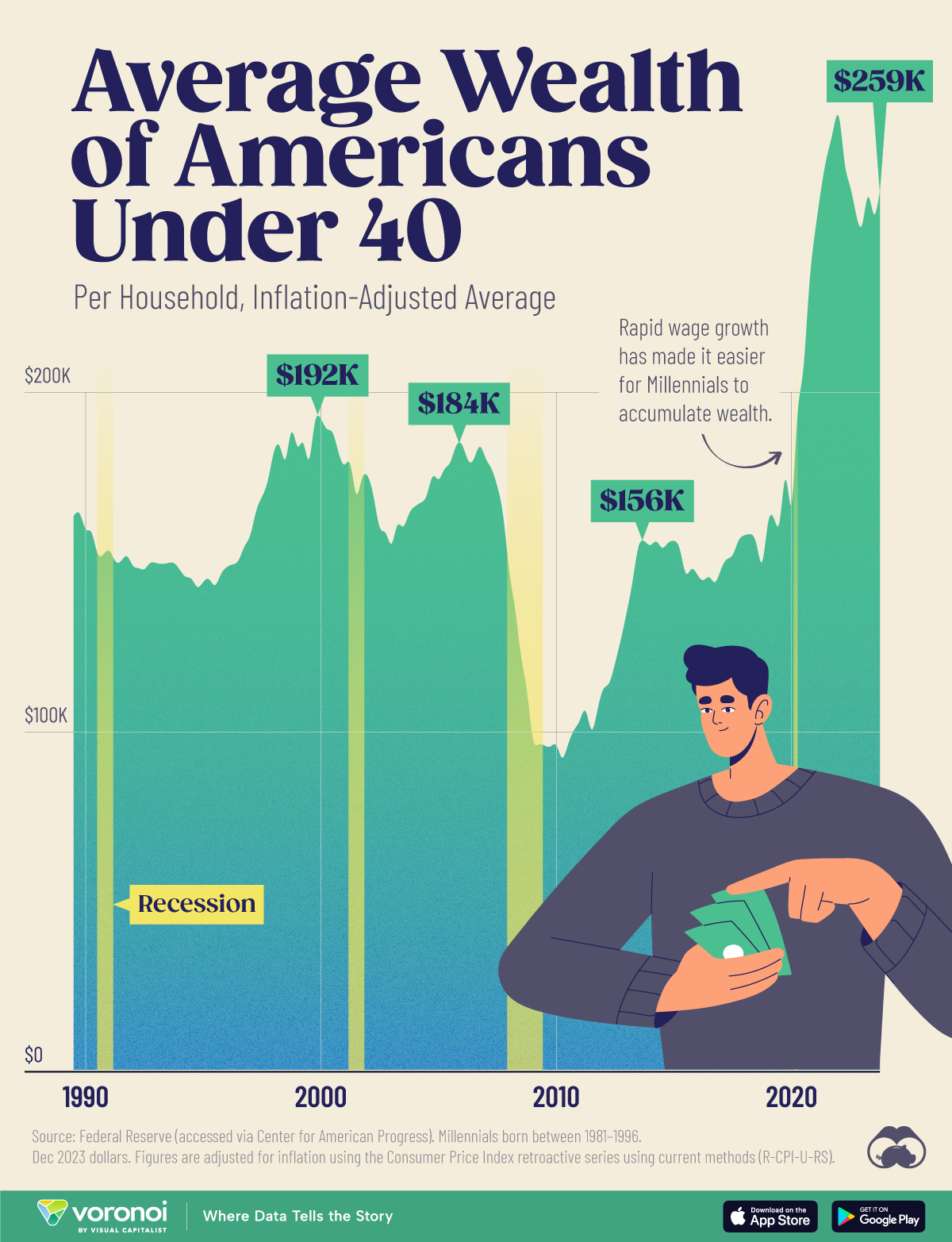![]()
See this visualization first on the Voronoi app.

Visualizing the Wealth of Americans Under 40 (1989-2023)
This was originally posted on our Voronoi app. Download the app for free on iOS or Android and discover incredible data-driven charts from a variety of trusted sources.
Millennials have been often referred to as a “broke generation.” Whether in conversations or on the news, it is common to hear how those born in the 1980s or 1990s are struggling in today’s economy, particularly when it comes to entering the housing market or saving for retirement.
However, data shows that the wealth of Americans under 40 years old has hit historic highs after the COVID-19 pandemic, suggesting that millennials have accumulated more wealth by their 40s than previous generations.
To illustrate this, the graphic above shows the average wealth per household, adjusted for inflation, for Americans under 40 years old from Q4 1989 to Q4 2023 (in December 2023 dollars). The data is sourced from the Federal Reserve and accessed via the Center for American Progress.
Post-Pandemic Recovery
Data indicates that younger Americans have reaped the most benefits from the strong economic recovery after the pandemic, enjoying low unemployment rates and rapid wage growth.
The average wealth of U.S. households under 40 was $259,000 in the fourth quarter (Q4) of 2023, compared to $164,000 in Q4 1989 and $182,000 in Q4 2000.
| Quarter | Average Wealth for Those Under 40 (USD) |
|---|---|
| Q4 1990 | 152K |
| Q4 1995 | 146K |
| Q4 2000 | 182K |
| Q4 2005 | 184K |
| Q4 2010 | 100K |
| Q4 2015 | 148K |
| Q4 2020 | 231K |
| Q4 2023 | 259K |
Looking specifically at millennial households, inflation-adjusted wealth has more than doubled during the same period.
The increase in younger Americans’ wealth is not concentrated in a single area. Average housing wealth—house values minus mortgage debt—rose by $22,000 from 2019 to 2023. Younger Americans also saw gains in liquid assets, such as bank deposits and money market mutual funds, business ownership, and financial assets, mainly stocks and mutual funds.
Additionally, non-housing debt, such as credit card and student loan debt, fell for this age group after the pandemic.
The post Visualizing the Wealth of Americans Under 40 (1989-2023) appeared first on Visual Capitalist.